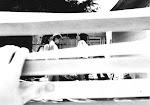
One of the perils of a professional education in film is that you can almost never get really absorbed in a movie. Maybe the occasional super-dramatic picture can pull you in so you forget everything but it, but most of the time when I go to a movie I'm thinking about camera shots and what the actors were thinking and why the director/writers decided to tell the story the way they did. I wouldn't call this a bad thing: if the movie is boring, it gives me something to think about, and if the movie is good, it actually adds to my enjoyment. Last weekend I went to see a movie called Bright Star, which is about the poet Keats, and I found I was spending a lot of time looking at the costumes worn by the lead actress, who was playing Fanny Brawne. In this case, however, I don't think this was a sign of distraction. The movie was made in such a way that I think the viewer is honestly supposed to notice everything every character wore. Bright Star is a historical picture, and a biopic, but it is small in scale, and focused on the everyday. There's not much of a plot, except that Fanny Brawne can't marry Keats because neither of them have any money. The ups and downs of their relationship and the machinations of one of Keats' friends, who dislikes Fanny, form the episodes of the movie, until the end, when Keats goes off to Italy to try and regain his health. (Spoiler - he doesn't make it back.) You often hear about character-driven plots in writing -- actions that are driven by the motivations of truly realistic characters, not just forced upon them by authors who need "something to happen" in this chapter. It's hard enough to achieve this in fiction, but it's far rarer in film. And that's precisely what Bright Star is. Go see it as a class in creating plot, conflict and character. And enjoy the costumes.








No comments:
Post a Comment